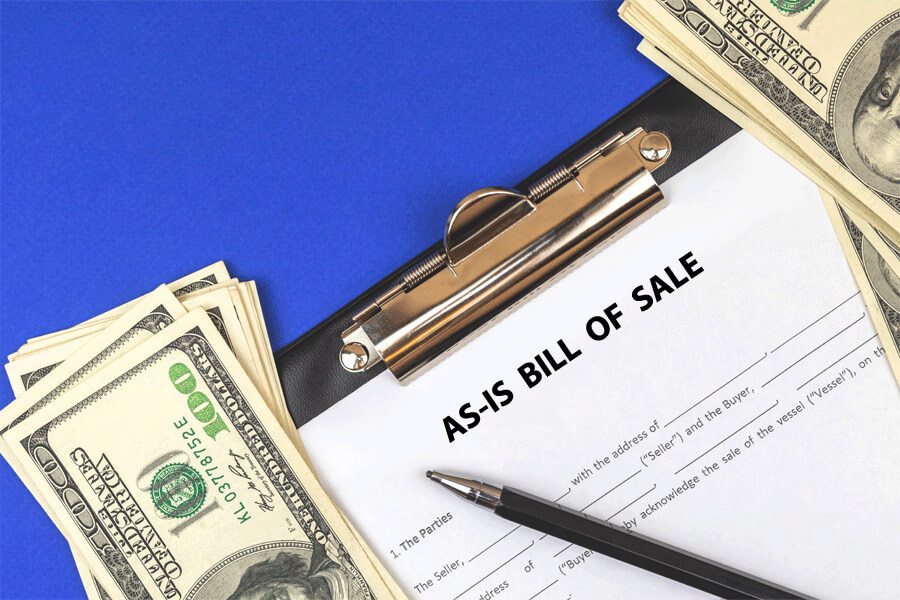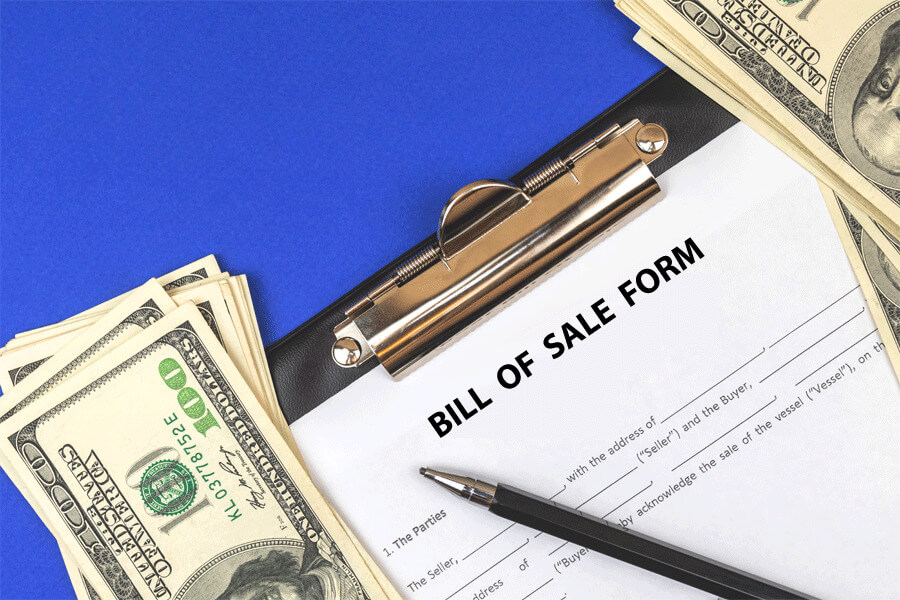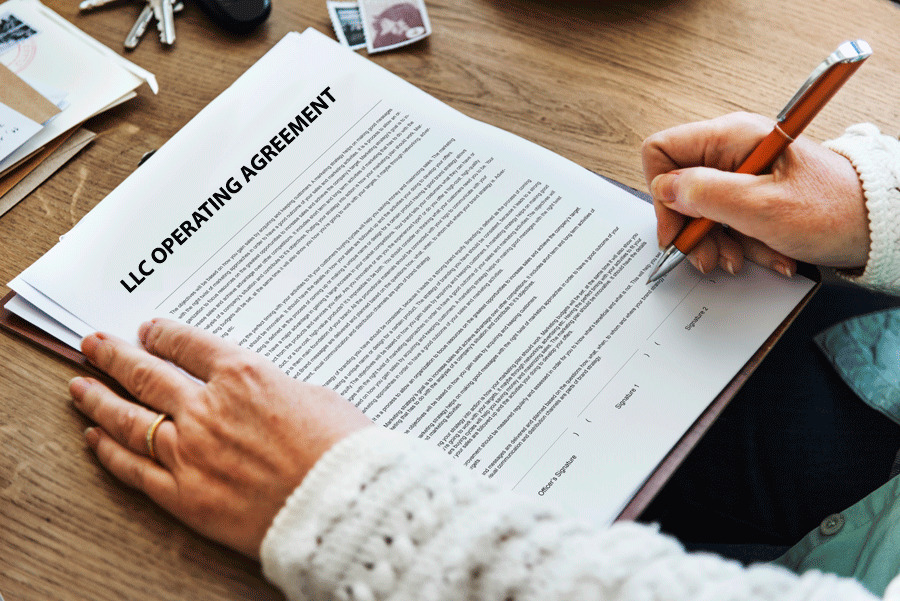A bill of sale is a document used in transactions of ownership or title to different possessions such as vehicles, equipment, or personal property. There are different types of bills of sale; an as-is bill of a sale is an example of these bills. It is a legal document and acts as proof of transfer of ownership from the seller to the buyer.
Ordinarily, an As-Is bill of sale will be prepared by the seller to communicate that they will not be liable or do not warranty against any issues related to the property or title of the property in question. Different types of bills of sale will have different levels of warranty. In addition, it must disclose that the buyer is selling a particular item with no guarantees. However, this bill of sale must be legitimate; any misrepresentation of the item’s value or withholding information can render the bill of sale null and void, hence unenforceable.
An As-Is bill of sale is a legal transaction document used to sell and purchase items without any guarantees that the property is free from defects, known and unknown.
An As-Is bill transfers ownership of the property in its current condition – As-Is. The seller does not offer any guarantee or warranty for any current or future issues to the property or item through the document. Instead, the document absolves the seller of any liabilities associated with the item once it has been sold. As a result, the buyer obtains immediate and complete ownership of the property and assumes any legal or financial responsibility to the purchased property.
This bill of sale is alternatively referred to as;
- A no-warranty bill of sale
- A quitclaim
As-Is Bill of Sale Templates
Writing this bill of sale is typically straightforward. However, it is much faster and easier to use its template, which is a process that can be done in minutes. Download a template like the ones provided here for the readers which meet the transaction requirements.

Items to be Sold Through As-Is Bill of Sale
As-is bills of sale can be used to buy or sell different types of property. The document is used when the seller does not want to offer any warranties against any claims related to the ownership or defect in the property. The buyer must also be willing to assume liabilities against any claims to the property being bought.
Provided below is a list of a few of these items which can be sold through this bill of sale:
- Vehicles
- Personal Property
- Bikes
- Motorcycles
- Equipment
- Boats
- Campers
Advantages and Disadvantages
An as-is bill of sales serves different uses to both the seller and the buyer. The overall purpose of the document is that it facilitates an ownership transaction.
The advantages and disadvantages of the document are as follows;
Advantages for sellers and buyers
This bill of sale allows private sellers to sell property such as vehicles in their current condition without offering any warranties. The document thus offers the seller legal protection if there are any issues associated with the property in the future.
EXAMPLE
The seller bears no liability after a car sale if the car gets into an accident. Also, bills of sale help sellers sell used items without offering any guarantees against defects in the item.
An as-is bill of sale is a quick way of buying property and attaining immediate ownership legally. This is because there are fewer formalities involved in the process. Also, you can purchase at a lower price.
Disadvantages for sellers and buyers
Since with this bill of sale, the seller does not offer any guarantees; this limits the number of buyers interested in a property on sale. This can also be time-consuming during a sale.
However, the document is associated with risks of buying an item “as is” and later discovering it is in poor condition, which might cost the buyer more money.
How to Write “AS-IS” Bill of Sale?
As earlier mentioned, there is basic information that ought to appear in a no-warranty bill of sale. This information must be neatly and indicated for the document to be effective.
These are some steps to make bill of sale:
Date of the deal
A bill of sale should be dated to show when the transaction took place. The date will help to keep a record of the transaction. The date should indicate the year, month, and day of the transaction. An as-is bill of a sale, being a legal document, may have to be referenced if any issues arise in the future.
Details of the seller
The next item should be the identification details of the person selling the property – identified as the seller. The seller’s name and a current and valid mailing address should be provided. Again, official names should be used, and the address must indicate the street address, street, city, and state.
Information about the purchaser
After the seller’s details, the purchaser should be identified by writing down their legal name and physical address. Their name should be provided first, followed by an address that indicates the street, city, and state of residence.
The agreed price of the vehicle
Transactions completed with this bill of sale involve the exchange of funds for the transfer of title. Write down how much the buyer will be paying the seller. Indicate the exact figure and the appropriate monetary unit.
Description of vehicle
Afterward, indicate the type of property being sold and provide any other descriptive information that can be used to specify the property or item. For instance, if the no-warranty bill of sale is being used to sell a vehicle, the following information can be provided.
- Make: The make of the vehicle should be indicated. This specifies the brand and kind of vehicle that will be transferred from the seller to the buyer.
- Model: Vehicles of the same kind and from the same brand can have different models. The specific model of the vehicle should be stated. The type of model will, in most cases, influence the price.
- Identification number: Each vehicle has its unique VIN (Vehicle Identification Number). Note down the specific vehicle’s identification number. The VIN can be obtained from the vehicle’s dashboard at the driver’s side.
- Colour: Colour is an essential feature of a car. Similar vehicles with different colours will have different valuations. Therefore, specify the vehicle’s color.
- Year: The year of production is essential to note down. This information should therefore be given too.
No warranty agreement conditions
The next section of the bill of sale should declare that the sale is under no warranty from both the seller’s and buyer’s perspectives.
No warranties can be interpreted as follows;
- From the seller’s perspective: The seller relinquishes their claim to the property after the transaction is complete using this bill of sale. Therefore, if the item increases in value, they should not demand additional compensation. Alternatively, the seller should not be liable for any issues or liabilities against the item after the sale is complete.
- From the purchaser’s perspective: The buyer should be aware that they assume any property liability after the sale is complete. This means, in the case of a vehicle, should it need repair, maintenance, or fail to function in the future, it should not hold the seller liable. Any losses and liabilities befall the buyer after the transaction.
Signatures of both
Lastly, both parties (seller and buyer) should sign the document next to their names and associated capacity regarding the transaction. They must also state the date of signing. This bill of sale then becomes valid and legally enforceable.
Buying from Dealer v/s Private Seller
There are slight differences when selling a vehicle as a dealer or a private seller. Car dealers are subjected to some formalities when using an as-is bill of sale. There will usually be conditions such as; the vehicle must be sold below a specific price and must be over a certain age.
The vehicle must meet all the safety and legal operation requirements at the time of the transaction. If not, the dealer must provide documents stating the vehicle is unsafe to use.
Private sellers can use this bill of sale without observing these guidelines. Typically, any private sale is deemed “as is” unless a purchase agreement states otherwise.
Key Takeaways
- An as-is bill of sale, also known as a no-warranty bill of sale, is a document used to sell the property where the seller does not offer the buyer any guarantees that the property is free of issues.
- The document is more prevalent among private vehicles, boats, bikes, motorcycles, equipment, etc.
- When buyers buy property using an as-is bill of sale, they should be prepared to assume any financial and legal liabilities associated with the item they bought.
- A standard no-warranty bill of sale will outline the date of sale, seller’s and buyer’s information, description of the property being sold, purchase price, and signatures of the involved parties.
- As-is bills of sale allow sellers to make quick sales which can be advantageous for foreclosures and instances where instant money is needed.
- The as-is bill of sale should be signed by both parties to verify that the seller is absolved of any liabilities (past and present) on the property.












